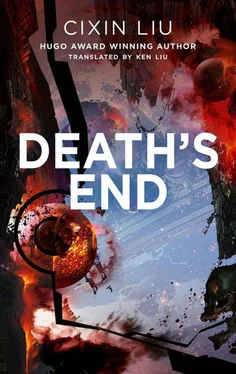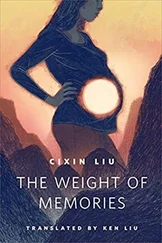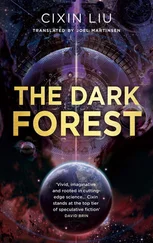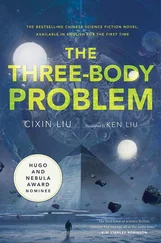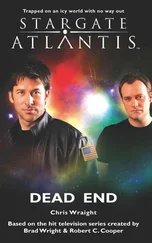The movie stimulated Cheng Xin’s interest in the culture of her new era. Once she recovered enough to walk, AA brought her to art shows and concerts. Cheng Xin could clearly remember going to Factory 798 [4] Translator’s Note : A famous artistic community in Beijing housed in abandoned military factory buildings. Artists began to congregate there in the 1990s.
and the Shanghai Biennale to see strange pieces of contemporary “art,” and it was hard for her to imagine how much art had evolved in the three centuries she was asleep. But the paintings she saw at the art show were all realistic—beautiful colors enlivened with vitality and feeling. She felt each painting was like a heart, beating gently between the beauty of nature and human nature. As for the music, she thought everything she heard sounded like classical symphonies, reminding her of the Yangtze in the movie: imposing and forceful, but also calm and soothing. She stared at the flowing river until it seemed that the water had ceased moving, and it was she that was moving toward the source, a long, long way….
The art and culture of this age were nothing like what she had imagined, but it wasn’t simply a matter of a return to classical style, either. It was more of a spiraling sublimation of post-postmodernism, built upon a new aesthetic foundation. For instance, A Fairy Tale of Yangtze contained profound metaphors for the universe and space and time. But Cheng Xin was most impressed by the disappearance of the gloomy despair and bizarre noise so prevalent in the postmodern culture and art of the twenty-first century. In their place was an unprecedented warm serenity and optimism.
“I love your era,” said Cheng Xin. “I’m surprised.”
“You’d be even more surprised if you knew the artists behind these films, paintings, and music. They’re all Trisolarans from four light-years away.” AA laughed uproariously as she observed Cheng Xin’s stunned gape.
Excerpt from A Past Outside of Time Cultural Reflection
After the creation of deterrence, the World Academy of Sciences—an international organization at the same level as the UN—was founded to receive and digest the scientific and technical information transmitted to Earth from Trisolaris.
People first predicted that Trisolaris would only provide knowledge to Earth in sporadic, disconnected fragments after much pressure, and sprinkle deliberate falsehoods and misleading ideas into what little they chose to share, so the scientists of Earth would have to sift through them carefully for nuggets of truth. But Trisolaris defied those expectations. Within a brief period of time, they systematically transmitted an enormous amount of knowledge. The treasure trove mainly consisted of basic scientific information, including mathematics, physics, cosmology, molecular biology of Trisolaran life forms, and so on. Every subject was a complete system.
There was so much knowledge, in fact, that it completely overwhelmed the scientific community on Earth. Trisolaris then provided ongoing guidance for the study and absorption of this knowledge. For a while, the whole world resembled a giant university. After the sophons ended their interference with the particle accelerators, Earth scientists were able to experimentally verify the core ideas of Trisolaran physics, giving humanity confidence in the veracity of these revelations. The Trisolarans even complained multiple times that humanity was absorbing the new knowledge too slowly. The aliens seemed eager for Earth to catch up to Trisolaris in scientific understanding—at least in the basic sciences.
Faced with such a puzzling response, humans came up with multiple explanations. The most plausible theory posited that the Trisolarans understood the advantage of the accelerating pace of human scientific development and wanted to gain access to new knowledge through us. Earth was treated as a knowledge battery: After it was charged fully with Trisolaran knowledge, it would provide more power.
The Trisolarans explained their own actions this way: Their generous gift of knowledge was done out of respect for Earth civilization. They claimed that Trisolaris had received even more benefits from Earth. Human culture gave Trisolaris new eyes, allowed Trisolarans to see deeper meanings in life and civilization and appreciate the beauty of nature and human nature in ways they had not understood. Human culture was widely disseminated on Trisolaris, and was rapidly and profoundly transforming Trisolaran society, leading to multiple revolutions in half a century and changing the social structure and political system on Trisolaris to be more similar to Earth’s. Human values were accepted and respected in that distant world, and all Trisolarans were in love with human culture.
At the beginning, humans were skeptical of these claims, but the incredible wave of cultural reflection that followed seemed to prove them true.
After the tenth year of the Deterrence Era, besides additional scientific information, Trisolaris began to transmit cultural and artistic products done in imitation of human models: films, novels, poetry, music, paintings, and so on. Surprisingly, the imitations were not at all awkward or childish; right away, the Trisolarans produced sophisticated, high-quality art. Scholars called this phenomenon cultural reflection. Human civilization now possessed a mirror in the universe, through which humanity gained a new understanding of itself through a novel perspective. In the following ten years, Trisolaran reflection culture became popular on Earth, and began to displace the decadent native human culture that had lost its vitality. Reflection culture became the new source for scholars seeking new cultural and aesthetic ideas.
These days, without being explicitly told, it was very hard to tell if a film or novel was authored by a human or a Trisolaran. The characters in Trisolaran artistic creations were all human, and they were set on Earth, with no trace of alienness. This seemed a powerful confirmation of the acceptance of Earth culture by Trisolaris. At the same time, Trisolaris itself remained shrouded in mystery, with almost no details about the world itself being transmitted. The Trisolarans explained this by saying that their own crude native culture was not ready to be shown to humans. Given the vast gap in biology and natural environment between the two worlds, such displays might erect unexpected barriers in the valuable exchange that was already taking place.
Humanity was glad to see everything developing in a positive direction. A ray of sunlight lit up this corner of the dark forest.
Deterrence Era, Year 61 The Swordholder
On the day of Cheng Xin’s discharge, AA told her that Sophon wanted to meet her.
Cheng Xin understood that AA wasn’t referring to the subatomic particles endowed with intelligence sent by Trisolaris, but to a woman, a robot woman developed by the most advanced human AI and bionics technology. She was controlled by the sophons and acted as the Trisolaran ambassador to Earth. Her appearance facilitated a more natural interchange between the two worlds than having sophons manifest themselves by unfolding in lower dimensions.
Sophon lived on a giant tree at the edge of the city. Viewed from the flying car, the leaves on the tree were sparse, as though it were late autumn. Sophon lived on the branch at the top, where a single leaf hung, an elegant dwelling made of bamboo and surrounded by a white cloud. The day was cloudless, and it was clear that Sophon’s house generated the white mist.
Cheng Xin and AA walked along the branch until they reached the tip. The road was lined with smooth pebbles, and they saw lush lawns on both sides. They descended a spiraling staircase to reach the door of the house itself, where Sophon welcomed them. The gorgeous Japanese kimono on her petite figure resembled a layer of blooming flowers, but when Cheng Xin saw her face, the flowers seemed to lose color. Cheng Xin could not imagine a more perfect beauty, a beauty animated by a lively soul. She smiled, and it was as though a breeze stirred a pond in spring and the gentle sunlight broke into a thousand softly undulating fragments. Slowly, Sophon bowed to them, and Cheng Xin felt her entire figure illustrated the Chinese character 柔, or soft, in both shape and meaning.
Читать дальше
